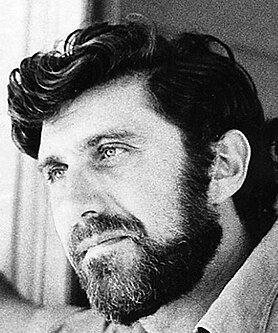Theories
| Unit 2: Theories and Measurement | |
|---|---|
| Theories and Measurement | Unit 2 Overview | Unit 2 Outcomes | Unit 2 Resources | Theories | Levels of Measurement | Reliability & Validity | Activities and Assessments Checklist |
Theories
Theories in psychology are groups of related statements that use cause‐and‐effect relationships to explain a variety of behaviours. A mere description of an observation is not a theory. For example, the statement, "My nephew played violent video games as a child and he had delayed language abilities" is an observation, not a theory, because it does not explicitly state a causal relationship.
Theories are often described as abstract. They rise above the specifics of individual experiments and refer to classes of individuals and categories of events, not to particular people and occurrences. They refer to sets of interlinked relationships between variables, not just to a single association. They permit explanation, not mere description.
Whereas you can prove a theorem in mathematics, you cannot prove a theory in psychology. To say you have proven something is to assert that it is true, with no doubt attached. For a number of reasons, conclusions drawn from psychological research cannot be made with that sort of confidence. A statement made by a psychologist that is based on research is more like the verdict of a jury than the conclusion of a mathematical proof. While not certainly true, the verdict is held to be true beyond reasonable doubt. To reflect this inherent uncertainty, psychologists use the word “confirmation” rather than “proof” when characterizing a positive outcome of their research. For example, imagine that you have the theory that because of the constraints on development related to evolution, genetics, and experience, all people have exactly five toes on each foot. To support your theory, you observe the feet of twenty people and note that they all have five toes on each foot. Though your observations support your theory, it does not prove it. Perhaps if you had observed the feet of a different twenty people you might have found someone who did not have five toes on each foot. Observing additional people does not solve the problem; you still can’t prove your theory. There may always be at least one person that you did not observe who does not have exactly five toes on each foot.
Though you cannot prove your theory, you can disprove it. By observing at least one person who did not have exactly five toes on each foot, your theory is disproven. Note that a disproven theory can still be modified so that it now explains our new observations. In this example, we might say "In general, healthy people who have not experienced developmental problems and who have not had accidents, have five toes on each foot." This modified theory now accounts for our new observations. It is a closer approximation to reality, as we understand it.
Theories are valuable because they organize data into a comprehensible framework. One theory can account for several pieces of data. By offering a meaningful framework, a theory packs the greatest number of facts into the smallest conceptual space. But just as thinking involves more than remembering, the value of a theory comes from more than just being a storehouse of knowledge. Theories also organize our thoughts, which can allow us to make new predictions about the world. These new predictions can lead to new experiments. Remember, the results of these experiments may confirm or disprove the theory (but not prove it). Therefore, theories generate predictions (about new facts or observations) as well as affording explanations (of old facts or observations). The more fruitful a theory is in this regard, the more it is valued. Good theories share three additional critical properties:
- Theories must be falsifiable. In other words, there must be some clearly defined and possible observation from a research project that will result in you having to abandon that theory because it was disproven. A theory that can never be disproven is not considered valuable in science.
- Theories must be precise. They make clear, specific predictions.
- Theories are parsimonious. A single theory accounts for more than a single observation. If we had a different theory for every observation, then theories would not add to the value of observations. This third property is sometimes referred to as "Occam’s razor." The underlying principle of Occam’s razor is that, other things being equal, the best theory is the simplest one.

